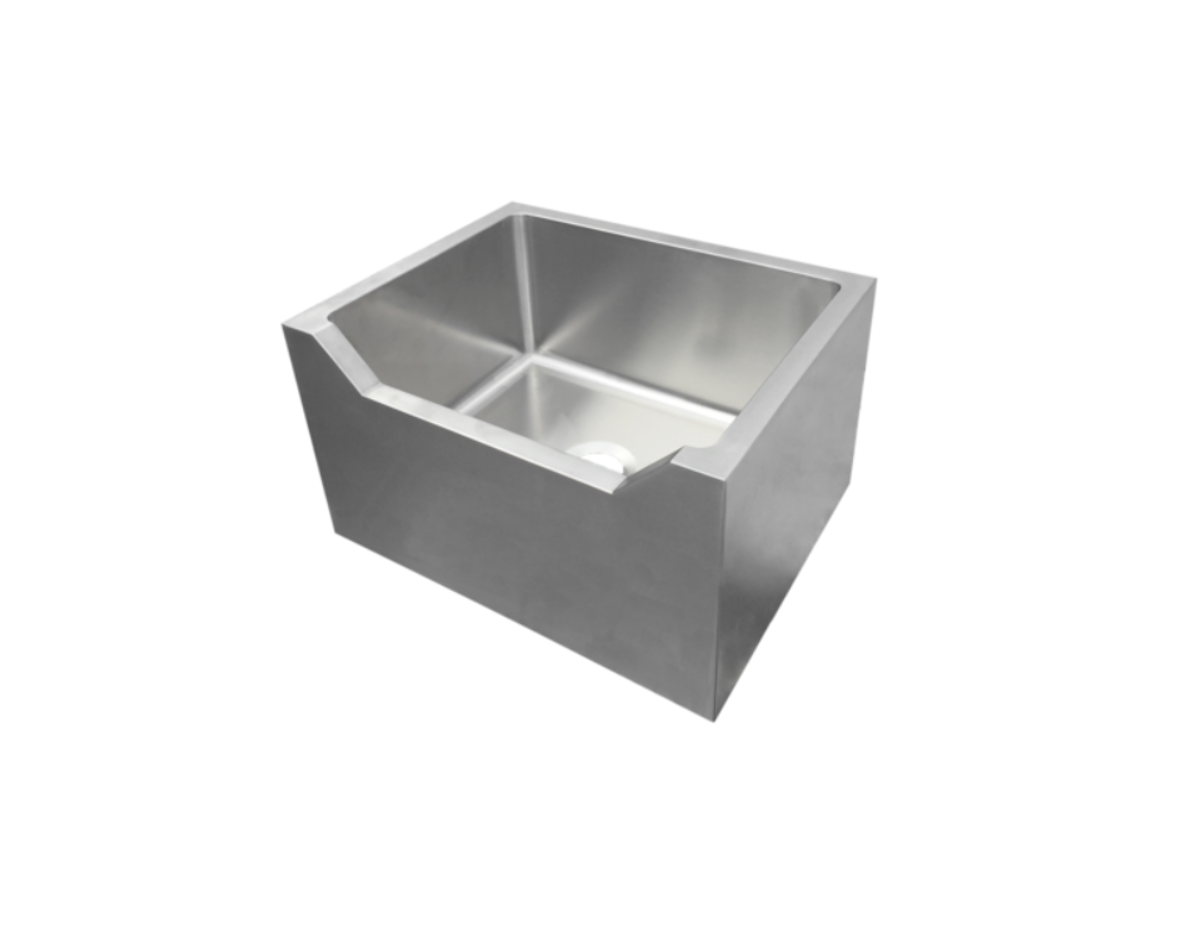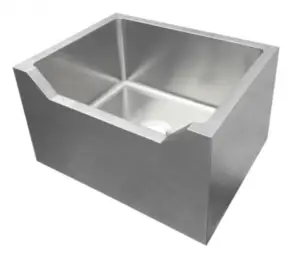IMC TEDDY FS-D Floor Sink Installation Guide
INTRODUCTION
Installing the IMC Teddy Floor Sink is a straightforward procedure that can be accomplished with normal construction materials and techniques. Installation procedures may vary due to field conditions and state regulations. Please note that the following instructions are recommendations only. These instructions apply to all Floor Sink Models. The installer is responsible for proper setting and making sure the appropriate codes are followed. Please contact the IMC Teddy Engineering Department (800-221-5644) prior to considering retrofit installations.
Please read the attached information carefully, as much of the information provided is reflecting proven installation techniques used in previous installations.
Parts Included
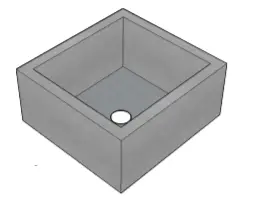
 Mop sink Beehive Strainer
Mop sink Beehive Strainer
- Mop Sink
- Beehive Strainer
Note: All plumbing connections of our equipment are subject to plumbers/installers discretion.
Step 1:
Note: Hardware not included.Stub must be 3⅛” maximum above finished floor.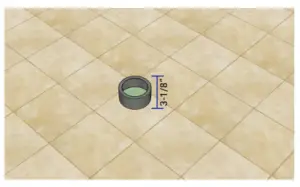
Step 2:
Fill Mop Sink drain with at least ¾” thick of sealant around inside drain. This will allow drains to seal tightly together.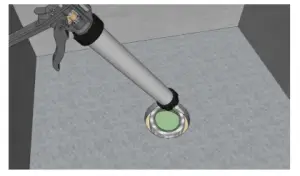
Step 3:
Align Mop Sink over stub. Clean out excess sealant as Mop Sink is put in place. Our Mop Sink is provided with ring over welded tail piece. Be sure to firmly rub sealant around perimeter of drain to prevent water from seeping through any openings that may have been left without treating.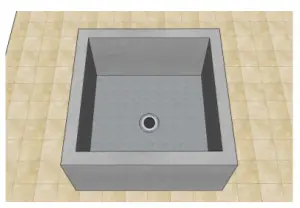
Step 4:
Place beehive strainer over drain opening.Provided With Clips For Tight Fit.
Step 5:
Finished installation should look like image to the right.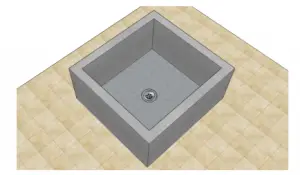
Warranty:
Product is guaranteed against defect in workmanship and material for a period of one year from date of shipment, provided such defects are do not result from abuse, unreasonable usage or other conditions beyond IMC’s control. IMC’s liability shall not exceed the cost of material furnished.
Easy Cleaning Instructions:
Rinsing is the most important part of care. Stainless steel will retain its original bright appearance if the product is rinsed thoroughly after each use. “Thorough” rinsing can be done by running the water throughout the product for a few minutes after each use. Typically, a rinse and towel drying after each use takes care of most everyday cleanups. For everyday cleaning we recommend using Stainless Steel Cleaners + Polishers. The non-abrasive formula is safe and effective for day to day cleaning. Your product will shine like new!
Recommendations for Proper Maintenance:
Use only a mild liquid dish-washing detergent with a soft sponge to clean and then thoroughly rinse the product. Rinse thoroughly after each use. “Thorough” rinsing can be done by running water for a few minutes and rubbing the cleaned area with a sponge.Towel dry after each use to prevent mineral deposits from building up on the surface of the product.
- Do Not allow liquid soap or other household cleansers to dry on the surface. Most brands contain chemical additives which will affect the original finish.
- Do Not use solutions of chlorine bleach and water. Chlorides, which are found in most soaps, detergents, bleaches, and cleansers, are very aggressive to stainless steel. If left on the surface too long they can cause surface pitting.
- Do Not use a steel wool pad to clean. Steel wool pads have a tendency to break apart and small particles of steel can become embedded in the surface of the product. The steel particles will rust and will give the appearance that the product itself is rusting.
- Do Not use abrasive cleansers or abrasive pads as it will scratch the surface.
- Do Not leave wet sponges, cloths, or cleaning pads on the product. This can lead to surface rust. Following these recommendations for the care and cleaning of your stainless steel product will insure that it will provide you with many years of service.
Chlorides:
Today, chlorides are found in most all soap, detergents, bleaches and cleansers; chlorides can be oppressive to stainless steel. However, chlorides are very water soluble. Therefore, THOROUGH RINSING of your product after each use to remove any chloride residue and a weekly scouring is all that is required to keep your product looking bright and shiny.
Water Quality:
The quality of your water can affect your product’s appearance. If your water has a high iron content, a brown surface stain can form on the product giving the appearance of rust. Additionally, in areas with a high concentration of minerals, or with over-softened water, a white film may develop on the product. To combat these problems, we suggest that the product be towel dried after use.
Discoloration, Rust and Possible Pitting:
Wet sponges, cloths, cleaning pads and rubber mats left on the product can lead to discoloration. Steel wool pads should never be used to clean your product as they leave small iron particles in the grain lines which rust and can damage the product. Continued usage in this manner may eventually lead to the product itself rusting and pitting.
Liquid Soap:
Do not allow concentrated liquid detergent to dry on your product. Most brands contain chemical additives which will affect the original finish.
Spotting:
The quality of your water can affect your product’s appearance. In areas with hard water, a brown surface stain can form on the product giving the appearance of rust. This also occurs in water with high iron content. Additionally, in areas with a high concentration of minerals, or with over-softened water, a white film may develop on the product. To combat this problem, we suggest that the product be towel dried after use.
Foods:
Heavy salt concentration or foods containing high levels of salt should not be allowed to dry onto the surface. Rinse your product thoroughly after use.For more in-depth maintenance & care guidelines, visit these resources:IMC/Teddy Tips NAFEM Tips
Read More About This Manual & Download PDF:
References
[xyz-ips snippet=”download-snippet”]

